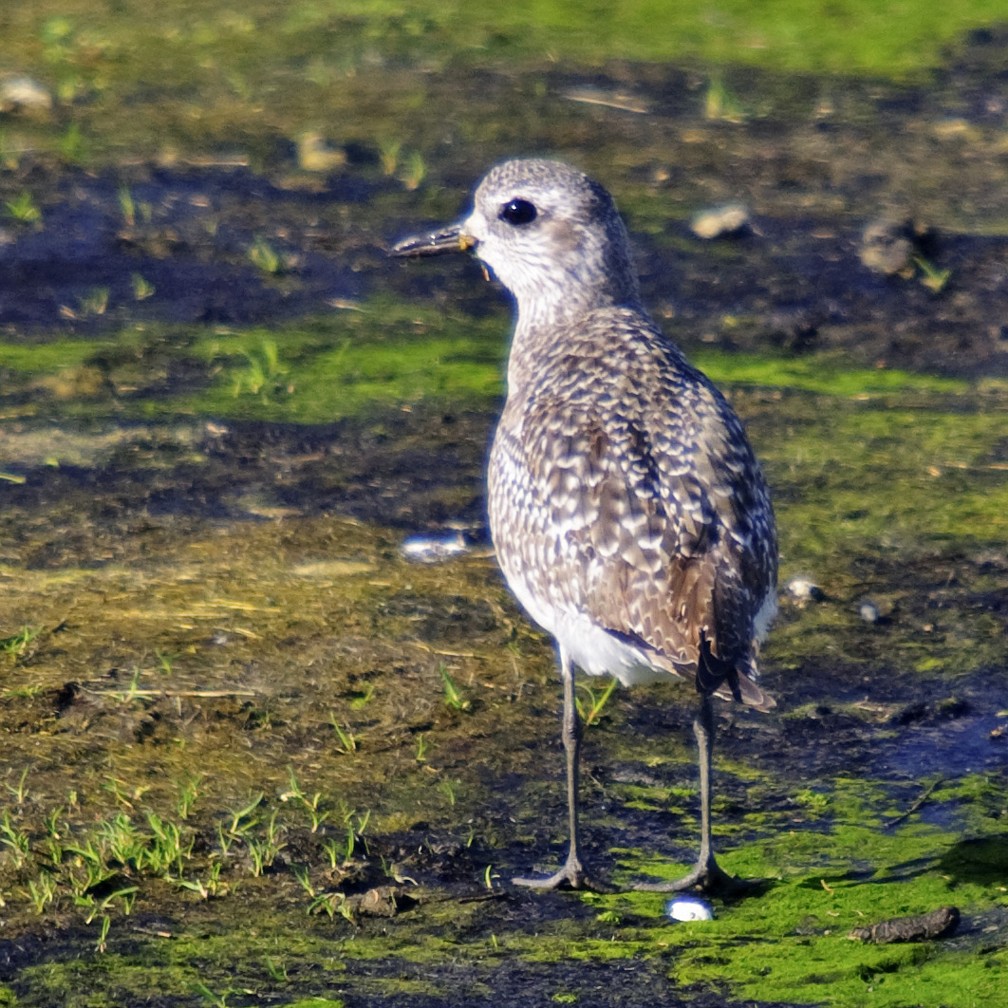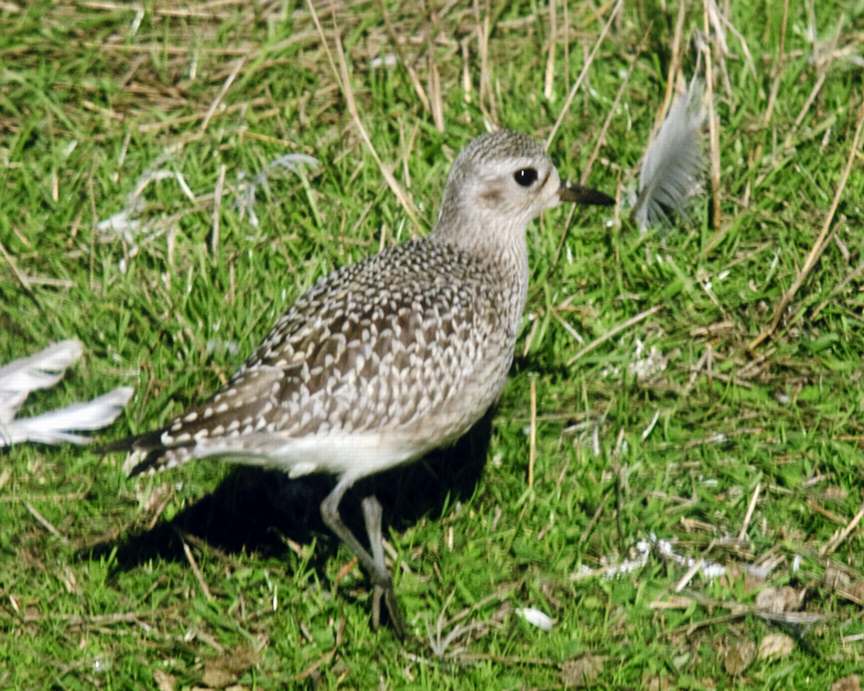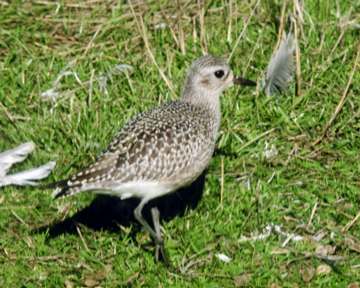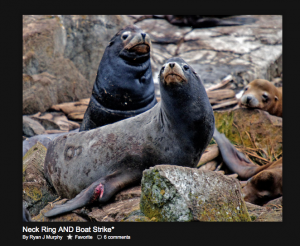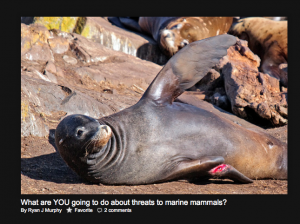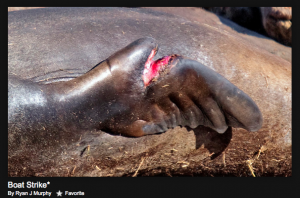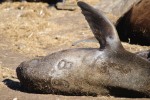Race Rocks Public Advisory Board Meeting (RRPAB), 25 Huron St. Victoria, September 25th, 2009: Minutes
Attendees:
Name
Organization
Doug Biffard BC Parks
Chris Blondeau Pearson College
Chris Bos Sports Fish Advisory Board
Erin Bradley Ogden Point Dive Centre/Dive Community
Paul Cottrell DFO
Sarah Davies DFO
Mike Fenger Friends of Ecological Reserves
Garry Fletcher Race Rocks Ecological Reserve Warden
Kelly Francis DFO
Veronica Lo CPAWS
Lesley MacDougall DFO
Angus Matthews Shaw Ocean Discovery Centre
Larry Paike DFO
Martin Paish Sports Fish Advisory Board
Glen Rasmussen DFO
Aaron Reith First Nations
Richard Taggart Pedder May Marina / Marinas & Sports Fishing
Mike Waters DND
Regrets:
Name
Organization
Cathy Booler Georgia Strait Alliance
Simon Pidcock Pacific Whale Watch Association
Dave Smith Environment Canada
Tomas Tomascik Parks Canada
Glen Rasmussen opened the meeting at 10:05
Introductions/purpose/missing sectors:
A question was asked regarding the timeline and commitment for the Race Rocks MPA in the context of future planned protected areas work. Is Race Rocks a stand alone, will there be many, a network?
Glen: the presentation includes context with respect to the national network, and how an MPA at Race Rocks fits in with the network plans, as well as with provincial obligations with the Ecological Reserve. In general, the current expected timeline for Race Rocks is to have the Regulatory Intent package ready to send to Ottawa by January – February, 2010 which will include three meetings of the Race Rocks Advisory Board.
Missing parties: Whale Watchers? Glen noted that the whale watching representative was unable to attend due to illness but he will attempt to make contact with him or with Dan Kukat to set up a bilat.
Research community: Suggested representatives included Verena Tunnicliffe, Phil Deardon, Rosalyn Canessa (UVic), Kai Chen, Chris Arby-Clark (UBC).
Transport Canada: anchoring and aircraft traffic are issues, so a TC rep would be useful.
Other ENGOs: WC2 – Glen hasn’t heard from them.
Municipalities: District of Metchosin
Discussion: concern regarding the separate process for First Nations relationships. While there was an understanding that the initial relationship development needs to take place separately, there was clear desire to have First Nations representatives at the RRPAB to ensure that a strong and meaningful connection can be made between the communities of user groups and First Nations groups. Aaron Reith noted that he would communicate this to the First Nations and pass along the invitation to have them participate in future RRPAB meetings.
Kelly Francis presented the history of the Race Rocks designation initiative:
There was confirmation among the RRPAB members who were active during the initial designation initiative that they felt the spirit of the initial agreement reached by the RRAB in 2000 had been betrayed as a result of modifications to the designation proposal which occurred once the proposal was sent to Ottawa. RRPAB members expressed their desire that reporting on lessons learned clearly state that the Gazetting process led to the failure to achieve designation. Although all participants in the Pacific Region had agreed to the regulatory intent, this was not reflected in the draft designation regulation which appeared in the RIAS and Chapter 1 of the Canada Gazette,
ACTION ITEM: change the PowerPoint presentation – slide “and that’s where it went sideways” to reflect that the RRAB had worked very hard to achieve agreement on the values, objectives, boundaries and prohibitions language for the Race Rocks MPA designation proposal, and indicate that the RRAB was not consulted on subsequent amendments to the wording of the regulation in Ottawa which undermined both the process and the contribution of the RRAB.
There was a query regarding where the conversations of the RRPAB will be recorded, how they will be used and made available. The response was that they will be reflected in the meeting minutes and notes, and an action item list will be developed, including changing the PowerPoint presentation to reflect the views of the board. In addition to the lessons learned from the Race Rocks initiative, there are now precedents for cooperative management regimes as a result of the designation of the Bowie Seamount MPA, and more experience with how to develop regulations for MPAs.
Doug Biffard provided context regarding the Province of BC Ecological Reserve (ER) designation for Race Rocks:
Race Rocks was designated an ER in 1980, as a benchmark example of a less disturbed ecosystem for research purposes, and as an area for public education regarding the value of conserving special ecosystems. The ER designation provides protection for the land masses, as well as the seabed out to the boundaries of the ER; a DFO-designated MPA would provide additional protection for the water column and its associated aquatic life. The outstanding issues are to ensure that there is Federal protection to ensure extraction (for recreational and commercial purposes) are prohibited within the boundaries of the protected area, and that there is a dialogue with Transport Canada to express a desire to limit anchoring and aviation disturbance for Race Rocks.
Glen Rasmussen presented context regarding the national network of MPAs:
Chris Bos provided clarification with respect to the Southern Strait of Georgia NMCA (Parks Canada): a feasibility study is taking place, and as effective management of the NMCA would require the Province to transfer the ownership of the seabed to Parks Canada, the Province is awaiting the results of the feasibility study before transferring seabed ownership.
General discussion regarding the number of MPAs or protected areas in the region. Concerns ranged from criticism that compared with the East Coast, the Pacific Region doesn’t have as many MPAs (generally due to the fact that the Pacific area is managed by one DFO administrative region, while there are 4 separate DFO administrative regions on the East coast, each with staff and resources to develop their own MPAs), to concern that there are a number of different agencies – Federal and Provincial – that are all working toward protecting areas of the marine environment using different legislative tools for different purposes. All agencies are working toward establishing protected areas in accordance with their individual legislative mandates and criteria, and one of the reasons for pursuing a network is to find convergence of the varied schemes to develop systems that can accomplish the objectives of all agencies. It was pointed out that from a stakeholder point of view, the current configuration of three separate Federal agencies running three separate processes to pursue different ways of closing areas to human use is frightening, cumbersome, limits effective engagement, and creates consultation burnout.
Glen Rasmussen presented the current MPA designation process:
General discussion regarding the Socio-Economic Overview and Assessment (SECOA) update.
Concerns with the update document: Sportsfish contact missing. It appears that the fishing section has been written without contacting recreational fishermen. There are 11,000 in the Victoria area. Much of the information seems to have been collected through contact with BC Parks and DFO staff, e.g. two employees of the DFO Statistics department are listed as the contact for commercial fishing. The dive community contact is an employee of one dive shop, not a sector association representative. Board representatives asked that this review be described as an overview only, and they were asked to provide the appropriate information and contacts through a take-home review of the SECOA after the meeting.
ACTION ITEM: RRPAB members review and provide necessary edits/additions to the draft SECOA
ACTION ITEM: PowerPoint presentation slide be changed to Socio Economic OVERVIEW only, not assessment.
General discussion regarding Race Rocks MPA proposed boundary: there were requests to reopen the development of boundary delineation along with the development of ecological objectives. Scientific data unavailable during the first process may now suggest more appropriate boundaries. However, the current designation process has been initiated on the understanding that it will build on the consensus reached during the previous process. The boundaries were developed based on agreement and support from all members of the previous RRAB, including the support of the SFAB. Current SFAB representatives have the authority to reach agreements based on the original boundaries, and changes to those boundaries would require a new round of consultation within their constituencies; a process that will delay their ability to participate and agree on the MPA boundaries. The argument was made that inappropriate boundaries could compromise the ability of the protected area to achieve its conservation objectives. Other comments included the clear recognition that the original boundaries were defined through a process of collaboration and compromise, to an area that was acceptable for conservation objectives and human users. The conservation objectives developed for Race Rocks will have to be developed with recognition of the limitations imposed by the size of protected area.
Glen Rasmussen presented the current work to develop a relationship between the Government of Canada (DFO) and First Nations (Beecher Bay, T’Souke, Songhees,):
Aaron Reith provided further comments from discussions with First Nations. The ‘no take’ language that was added to the Gazette 1 regulations during the first process caused a severe amount of mistrust and anger within the First Nations community. The work of First Nations chiefs and DFO staff in the past eight months has gone a long way to repairing the relationship damage from the previous process. First Nations see this as a very positive change and view the current process as a potential to build relationships in the community with the department, and the management board may set an example for future arrangements. Kelly Francis noted that the development of an agreement between a group of First Nations and DFO for the management of a MPA is a very special arrangement. Members of the RRPAB were eager to see the MOU at the earliest possible time, and stressed the importance of a transparent process for stakeholders and First Nations to know what is being discussed at each table. RRPAB members reiterated their desire to have meetings that included First Nations and stakeholders; Aaron noted that he would make an invitation to the First Nations for such a meeting.
Glen Rasmussen presented the MPA designation process:
RRAB members asked where costs of designation and operation are identified: if there are explicit commitments to dollar amounts from DFO for the operation of the MPA. Kelly Francis and Glen Rasmussen responded that the Regulatory Impact Analysis Statement and the Triage Questionnaire explicitly indicate the costs and benefits of MPA designation, including environmental costs, costs to human users, and actual operational costs. While there are no specific dollar amounts, there is a clear statement recognizing the obligation and commitment of DFO to support the operation and management of the MPA to achieve its objectives, with some level of funding.
Glen Rasmussen presented the proposed boundary for the Race Rocks MPA:
There is agreement from BC Parks, as well as DFO Fisheries and Aquaculture Management, that current boundaries for the Ecological Reserve, commercial fishery closures, rockfish conservation areas, and other closures, will be modified to reflect the accepted boundary for the MPA for consistency. The currently proposed boundary remains largely similar to the 20 fathom boundary agreed upon in the previous process; however, the boundaries will be described using coordinates rather than depth contours as those are not an acceptable method of delineation. The current proposed boundary forms a straight – edged polygon, similar in size to the current Rockfish Conservation Area boundaries and will be described using coordinates that are determinable through the use of GPS. General discussion included the rationale for a GPS-based boundary vs. a distance from shore boundary. It was determined that for the recreational boater they would be more likely to have the on board technology needed (GPS) to determine their coordinates, but unlikely to have radar necessary to determine distance from a point. There was also discussion of the need for markers on the water to mark the protected areas boundary; operational needs such as boundary markers will be addressed during the development of the management plan.
ACTION ITEM: Mike Waters will provide a DND danger template to add to Glen’s boundary slides.
ACTION ITEM: Glen will add the multibeam data to the boundary map and send to RRPAB members.
Glen Rasmussen led the values discussion and asked if the values identified during the original process are still valid and accurate.
Garry Fletcher noted that Race Rocks is now included as a North America Marine Protected Area Network (NAMPAN) site.
ACTION ITEM: reassess the values from the previous process and provide edits.
Stakeholder input table: Glen Rasmussen introduced the stakeholder input table and asked for a volunteer sector representative to work through the table as an example.
Erin Bradley and Doug Biffard agreed to include their feedback on behalf of the dive community. The stakeholder input table will be sent to all RRPAB representatives to complete on behalf of their respective sectors.
A question was raised about what physical extent to place on comments for the table: e.g. the values for the area may be localized (high current brings high mammal population etc), while the impacts may be from beyond (e.g. DND blasting outside of MPA boundaries affects mammal and bird behaviour). Glen Rasmussen suggested keeping comments relevant to those components that are within the proposed boundary, with the recognition that there are outside impacts that may need to be addressed within designation or within the management plan.
It was suggested that DND should perhaps not be included in the ‘sectors’ column of the table, as they have no direct interest in Race Rocks, but are instead a direct impact on Race Rocks. The input from DND would not necessarily include the components of the area they find valuable, but rather include a justification/rationale for their need to impact the area.
Glen suggested that the impact of DND to the area would likely be identified through the risks reported by other sectors. The potential or realized impacts of any human use within the proposed MPA boundaries should be recorded, and DFO will work to review, seek changes to the activities if possible or mitigate to minimize impact. For example, DFO has been working with DND to review DND’s practices and mitigate impacts.
Glen Rasmussen presented the RRAB roles and responsibilities. RRPAB members stressed that the spirit of community cooperation has always been, and will continue to be, an important asset. Glen noted the MOU that is currently being reviewed within the First Nations communities includes a recognition of the need for a relationship with the Province of BC, and with the community of other interests in Race Rocks.
It was suggested that the RRAB and FN meet at Pearson College, as the college has been designated an appropriate place for sharing between First Nations and other communities. Chris Blondeau agreed and extended the invitation to hold a meeting there.
Glen also noted that a draft Terms of Reference (ToR) has been developed for the RRPAB, similar to the ToR developed in the previous process, and asked members to review and comment on it.
ACTION ITEM: RRPAB members to review and comment on the draft Terms of Reference.
ACTION ITEM: Each organization provides / share links to their vision documents to promote greater understanding throughout the RRAB.
ACTION ITEM: agree on next meeting date.
Summary of ACTION ITEMS:
DFO: change the PowerPoint slide to reflect that the failure occurred in Ottawa
RRPAB members: review and provide necessary edits/additions to the draft SECOA
DFO: PowerPoint slide changed to Socio Economic OVERVIEW
Mike Waters: provide a DND danger template to add to Glen’s boundary slides
DFO: add the multibeam data to the boundary map and send to RRAB members.
RRPAB members: reassess the values from the previous process and provide edits.
RRPAB members: review and comment on the draft Terms of Reference.
RRPAB members: provide / share links to their organization’s vision documents
RRPAB members: agree on next meeting date.

